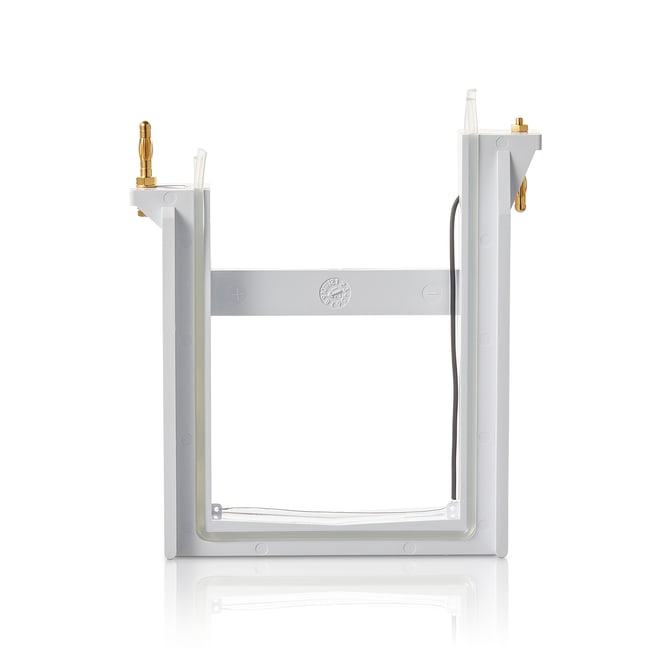I am transferring a Tris-Glycine gel using constant voltage and the current reading is way over the expected starting current. Can you offer some suggestions?
The most common cause of abnormally high current is the transfer buffer. If the transfer buffer is too concentrated, this leads to increased conductivity and current. High current may also occur if Tris-HCl is accidentally substituted for the Tris base required in the transfer buffer. This will again result in low buffer pH and lead to increased conductivity and current and subsequently, overheating. We recommend checking the transfer buffer and its reagent components and re-diluting or remaking the buffer.
Find additional tips, troubleshooting help, and resources within our Protein Electrophoresis and Western Blotting Support Center.
I ran my protein under native conditions on a Tris-Glycine gel. It has a pI that is higher than the pH of the Tris-Glycine transfer buffer. Can you offer some tips for transferring it?
- Increase the pH of Tris-Glycine transfer buffer to 9.2, allowing all the proteins below pI 9.2 to transfer towards the anode electrode.
- Use the Tris-Glycine transfer buffer and place a membrane on both sides of the gel. If there are any proteins that are more basic than the pH of the transfer buffer, they will be captured on the extra membrane placed on the cathode side of the gel. Both membranes can then be developed in the same manner.
- Prior to blotting, incubate the gel for 15 minutes in Tris-Glycine transfer buffer containing 0.1% SDS. The small amount of SDS will give the proteins enough charge to move unidirectionally towards the anode and in most cases, should not denature the protein. Proceed with the transfer using regular Tris-Glycine transfer buffer.
Find additional tips, troubleshooting help, and resources within our Protein Electrophoresis and Western Blotting Support Center.
I had problems transferring my larger-molecular weight proteins from my NuPAGE gel. Can you please offer some suggestions?
For proteins larger than 100 kDa, we recommend pre-equilibrating the gel in 2X NuPAGE Transfer buffer (without methanol) containing 0.02-0.04% SDS for 10 minutes before assembling the sandwich and then transferring using 1X NuPAGE transfer buffer containing methanol and 0.01% SDS.
Find additional tips, troubleshooting help, and resources within our Protein Electrophoresis and Western Blotting Support Center.
What causes empty spots on my membrane after transfer?
Here are possible causes and solutions:
- Presence of air bubbles between the gel and the membrane preventing the transfer of proteins. Be sure to remove all air bubbles between the gel and membrane by rolling a glass pipette over the membrane surface.
- Expired or creased membranes used. Use fresh, undamaged membranes.
Find additional tips, troubleshooting help, and resources within our Protein Electrophoresis and Western Blotting Support Center.
I performed a western transfer and see the appearance of diffuse bands and swirling patterns on the membrane. What could have happened?
The swirling and diffuse banding patterns are typical of molecules moving laterally before binding to the membrane during transfer. Here are possible causes and solutions:
- Poor contact between the gel and the membrane: The gel should be attached to the membrane through capillary action. To ensure that this happens, make sure that you roll over the surface of each layer of the gel/membrane sandwich with a glass pipette to ensure good contact between the gel and the membrane. It is helpful to use a disposable pipette to place some extra transfer buffer on the surface of each layer as the sandwich is being made. Also, the pads need to be fully saturated (push down with gloved hand when they are placed in transfer buffer to make sure there are no air bubbles.)
- Under-compression of the gel: The gel/membrane assembly should be held securely between the two halves of the blot module. Try adding another pad or replace any pads that have lost their resiliency with fresh ones.
- Over-compression of the gel: A good indication of over-compression is if the gel has been excessively flattened. In the event that the sandwich is over-compressed, remove enough pads so that the blotter can be closed without exerting excess pressure on the gel and membrane.
Note: The height of the uncompressed pads should be 0.5-1.0 cm above the level of the sealing gasket.
Find additional tips, troubleshooting help, and resources within our Protein Electrophoresis and Western Blotting Support Center.


